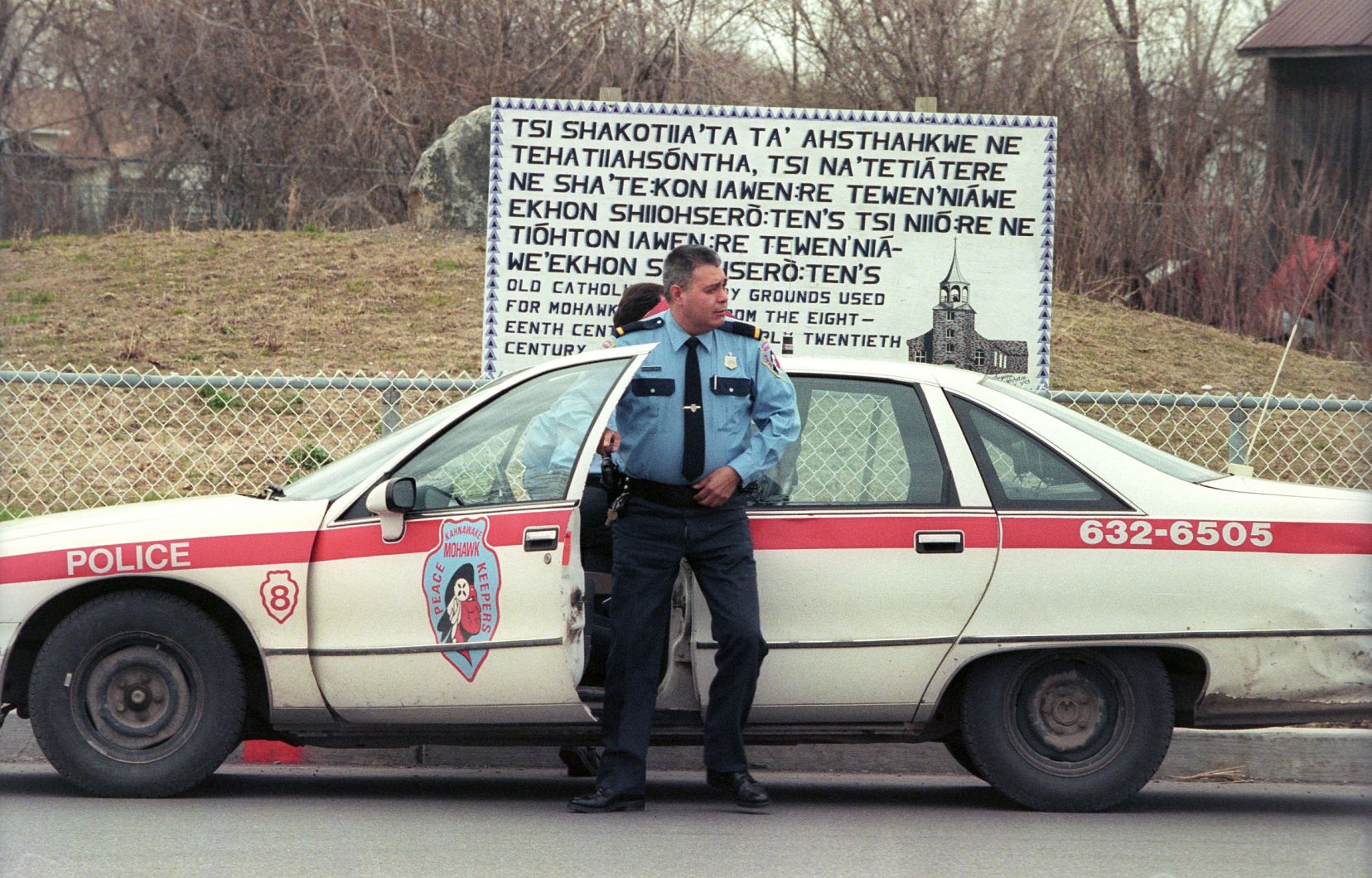The Mohawk police force has final say on whether an injunction calling for an end to the protest action in the community is enforced.
All eyes are on the Kahnawake Mohawk Peacekeepers, the police force with the final say on whether an injunction calling for an end to the railway blockade in the community southwest of Montreal is enforced.
The protest — in solidarity with Wet’suwet’en hereditary chiefs protesting against a pipeline in British Columbia — has blocked Canadian Pacific Railway freight trains and Candiac commuter trains since Feb. 8.
Who are the Peacekeepers?
A police force with about 33 officers, they are the sole policing service for the community with exclusive jurisdiction, according to the Kahnawake Peacekeepers Law. Their role: “to preserve and maintain peace, order, protection and security.”
Under an agreement with the Quebec government, “the Sûreté du Québec and the Peacekeepers must take the necessary steps to ensure mutual assistance and co-operation with respect to the effective monitoring of compliance with applicable legislation.”
Does the SQ patrol Kahnawake?
No. The force occasionally enters the territory but is expected to warn the Peacekeepers in advance. On occasion, SQ cruisers arrive unannounced, sparking anger in Kahnawake.
In 2014, for example, Kahnawake leaders complained that an SQ officer pulled over a member of the community driving within Kahnawake and approached him with his gun drawn.
“Many community members view this as an act of provocation, and we share that concern,” the Mohawk Council of Kahnawake said at the time.
How long has the SQ been barred from Kahnawake?
Kahnawake has been wary of the provincial force since at least 1979.
That year, the SQ sparked outrage in the community when one of its officers, Robert Lessard, killed steelworker David Cross, after pursuing the 28-year-old Mohawk over the Mercier Bridge to his Kahnawake home in a high-speed car chase.
Cross was brandishing a stick when Lessard shot him three times in the chest before a group of horrified Mohawk witnesses. A jury later acquitted the officer of manslaughter.
After the shooting, infuriated Kahnawake leaders warned that SQ officers would be arrested if they tried to enter the territory again.
Can the SQ enforce the blockade injunction?
Only if the Peacekeepers ask for the provincial force’s help, Marcel Savard, a former deputy director of the SQ, told Radio-Canada on Wednesday.
“I don’t see on the horizon at the moment a scenario in which the SQ would show up there to ensure the injunction is respected,” Savard said.
He said the SQ has a detailed “intervention plan” that spells out how it would proceed if it was ever to intervene in Kahnawake. In an extreme situation, that could include asking for operational assistance from the military, Savard said.
But he said the possible negative consequences of an intervention have to be weighed — a violent confrontation could erupt, for example, as it did during the Oka Crisis.
In July 1990, Marcel Lemay, an SQ officer, was fatally shot when provincial forces moved in to clear a barricade in another Mohawk community, Kanesatake. The Oka Crisis was defused 78 days later.
Savard noted that coroner Guy Gilbert, in his 1995 report on the Lemay’s death, said any police operation with community-wide effects should be assessed on the basis of legality, necessity and urgency.
In the Kahnawake situation, despite the difficulty caused by the blockade, Savard said he sees no urgency to warrant an SQ intervention, adding he thinks there’s momentum toward a peaceful resolution to the impasse.
CP has said it was told by the SQ that it would not “intervene in any way unless the Peacekeepers sought assistance.”
Has anything changed since Oka?
“I think the SQ has made better efforts to develop liaison officers who work more closely with communities, who try to establish better relations with the communities. But like anything else, things can always be improved.”
What are leaders saying about the blockade?
Premier François Legault has repeatedly said he wants police to intervene. On Wednesday, the premier suggested the SQ is holding back because Mohawks are armed with AK-47 assault rifles, a charge vehemently denied by protesters.
Kahnawake Grand Chief Joe Norton has said the injunction “will not be executed on this territory.” Chief Peacekeeper Dwayne Zacharie has also said his police service will not enforce the injunction.
Who funds the Peacekeepers?
Since the 1990s, the force has received funding from the federal and provincial governments, with Ottawa providing 52 per cent of the funding and Quebec 48 per cent. In 2017-2018, the federal government supplied $2.33 million, while Quebec provided $2.15 million.
Provincial and federal governments provide funding for policing in about 40 Indigenous communities across Quebec.
The federal government established the First Nations Policing Program in 1991 to help pay for law enforcement in 450 communities across Canada. The aim: “to provide First Nation and Inuit communities with access to police services that are professional, effective, culturally appropriate and accountable.”
How are Peacekeepers trained?
Recruits take part in an intensive six-month training program at the RCMP Academy in Regina, the Peacekeepers told The Eastern Door, a Kahnawake newspaper, in 2017.



















